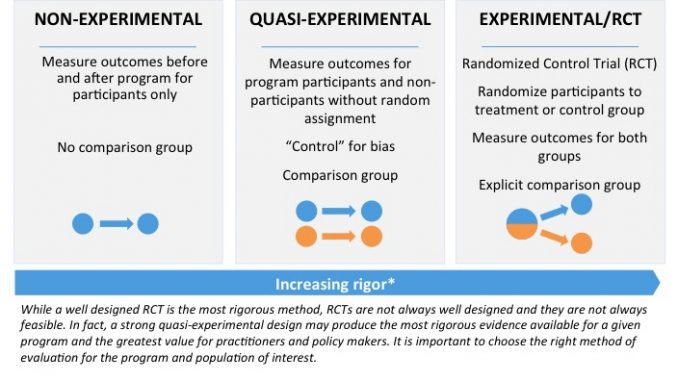Table Of Content

There are several actions that could trigger this block including submitting a certain word or phrase, a SQL command or malformed data. This involves randomly assigning participants to different groups or treatments to ensure that any observed differences between groups are due to the treatment and not to other factors. Similarly, experimental research is used in the field of psychology to test theories and understand human behavior. By manipulating variables such as stimuli, researchers can gain insights into how the brain works and identify new treatment options for mental health disorders. You should be able to create groups with an equal number of subjects and include subjects that match your target audience.
A systematic review of experimental studies on Salmonella persistence in insects npj Science of Food - Nature.com
A systematic review of experimental studies on Salmonella persistence in insects npj Science of Food.
Posted: Mon, 28 Aug 2023 07:00:00 GMT [source]
Experimental Design Methods
Experimental research is a study conducted with a scientific approach using two sets of variables. The first set acts as a constant, which you use to measure the differences of the second set. Quasi-experimental research design doesn’t have randomly selected participants. Researchers typically divide the groups in this research by pre-existing differences.
RELATED ARTICLES
A proper experimental design serves as a road map to the study methods, helping readers to understand more clearly how the data were obtained and, therefore, assisting them in properly analyzing the results. Some of the biases observed with cohort studies include selection bias and information bias. Some individuals who have the exposure may refuse to participate in the study or would be lost to follow‐up, and in those instances, it becomes difficult to interpret the association between an exposure and outcome. Also, if the information is inaccurate when past records are used to evaluate for exposure status, then again, the association between the exposure and outcome becomes difficult to interpret.
Latest articles
This way, organizations can determine an employee’s skill set at the point of employment. The first two of these groups are tested using the posttest-only method, while the other two are tested using the pretest-posttest method. If after the duration of the research, we find out that sample A grows and sample B dies, even though they are both regularly wetted and given the same treatment. Therefore, we can conclude that sunlight will aid growth in all similar plants. Observational studies can be either descriptive (nonanalytical) or analytical (inferential) – this is discussed later in this article. Although order effects occur for each participant, they balance each other out in the results because they occur equally in both groups.
For many designed studies, the sample size is an integer multiple of the total number of treatments. This integer is the number of times each treatment being repeated and one complete repitition of all treatments (under similar experimental conditions) is called a complete replicate of the experiment. Interventional studies are experiments where the researcher actively performs an intervention in some or all members of a group of participants. This intervention could take many forms – for example, administration of a drug or vaccine, performance of a diagnostic or therapeutic procedure, and introduction of an educational tool.
As a result, the design of the study requires meticulous planning and resources to provide an accurate result. This experimental design method involves manipulating multiple independent variables simultaneously to investigate their combined effects on the dependent variable. A quasi-experimental design is similar to an experimental one, but it is not the same. In this research, an independent variable is manipulated, but the participants of a group are not randomly assigned. Quasi-research is used in field settings where random assignment is either irrelevant or not required.
Experimental study on crashworthiness and failure mechanisms of aeronautical multi-fibers hybrid composite ... - ScienceDirect.com
Experimental study on crashworthiness and failure mechanisms of aeronautical multi-fibers hybrid composite ....
Posted: Mon, 25 Sep 2023 08:10:34 GMT [source]
You can measure some data with scientific tools, while you’ll need to operationalize other forms to turn them into measurable observations. However, these conditions are unethical or impossible to achieve in some situations. This procedure uses mathematical, physical, or computer models to replicate a real-life process or situation. It is frequently used when the actual situation is too expensive, dangerous, or impractical to replicate in real life. Before employing a job seeker, organizations conduct tests that are used to screen out less qualified candidates from the pool of qualified applicants.

A company in the product development phase creates multiple prototypes for testing. With a randomized selection, researchers introduce each test group to a different prototype. Develop a prediction about how the independent variable will affect the dependent variable. Although closely related to a true experiment, quasi-experimental research design differs in approach and scope. The research type you use will depend on the criteria of your experiment, your research budget, and environmental limitations. Experimental research enables researchers to conduct studies that provide specific, definitive answers to questions and hypotheses.
You could refer to the list as a checklist of what to avoid while designing your research. This type of experimental research is commonly observed in the physical sciences.
The purpose of study, experimental, or research design in scientific manuscripts has changed significantly over the years. It has evolved from an explanation of the design of the experiment (ie, data gathering or acquisition) to an explanation of the statistical analysis. However, these differences will need to be accounted during analysis of results. Experimental research is often the final form of a study conducted in the research process which is considered to provide conclusive and specific results.
Field experiments are conducted in naturalistic settings and allow for more realistic observations. However, because field experiments are not as controlled as laboratory experiments, they may be subject to more sources of error. This design involves randomly assigning participants to one of two or more treatment groups, with each group receiving one treatment during the first phase of the study and then switching to a different treatment during the second phase.
If you don’t have enough data to support your decisions, you must first determine the facts. When groups experience different product designs, the company can assess which option most appeals to potential customers. Experimental research may not capture the complexity of some phenomena, such as social interactions or cultural norms.
Typically, subjects with the disease tend to remember certain events compared to subjects without the disease. One of the ways to decrease observer bias is to use blinding (discussed in section “Blinding”). Experimental research design is a framework of protocols and procedures created to conduct experimental research with a scientific approach using two sets of variables.
Experimental research designs are often considered to be the standard in research designs. This is partly due to the common misconception that research is equivalent to scientific experiments—a component of experimental research design. This is because it takes place in a real-life setting, where extraneous variables cannot be eliminated. Therefore, it is more difficult to conclude non-experimental studies, even though they are much more flexible and allow for a greater range of study fields. Only one group of carefully selected subjects are considered in this research, making it a pre-experimental research design example.

No comments:
Post a Comment